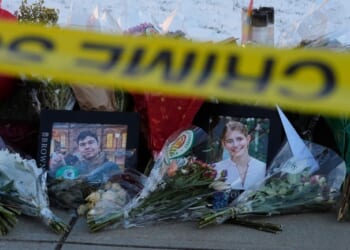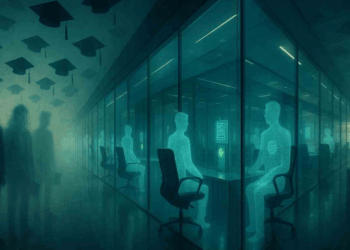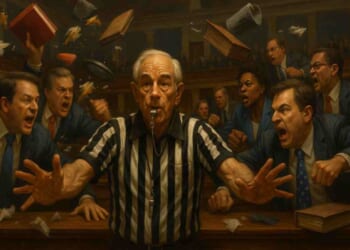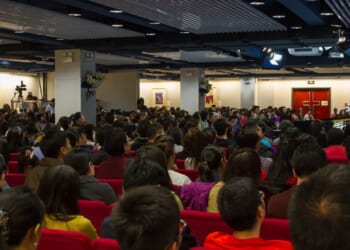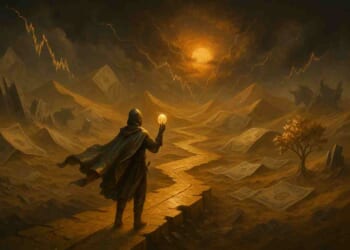
As I have been outlining on Hot air, we’re planning an Anti-Communist Film Festival in 2026. One of the communist disasters we will be discussing is China’s Cultural Revolution. We would like to show the short documentary Dreaming Against the World. It depicts the life of Mu Xin (1927-2011), a brilliant yet largely forgotten artist of the 20th century. Xin was imprisoned during China’s Cultural Revolution, Mu Xin risked his life to write and paint. Dreaming Against the World tells his story. The documentary portrait filmed on location in China and New York by filmmakers Tim Sternberg and Francisco Bello has been nominated for Academy Awards.
Taking place from 1966-1976, the Cultural Revolution was the doing of China’s “Great Helmsman,” Mao Zedong (1893-1976), the chairman of the Chinese Communist Party. After the failure of Mao’s economic Great Leap Forward, a program of agricultural collectivization that resulted in tens of millions of deaths, Mao saw the Cultural Revolution as a way to finally set things right. As Whittaker Chambers knew, communists always need a “totalizing solution” to the pain of life. “Our objective is to struggle against and crush those persons in authority who are taking the capitalist road … so as to facilitate the consolidation and development of the socialist system,” Mao said in his “Sixteen Points” declaration of 1966.
In his book The People’s Revolution: A Cultural History (2016), China expert Frank Dikötter observes that Mao hoped his movement would make China the pinnacle of the socialist universe and make him “the man who leads planet Earth into communism.” When Soviet leader Nikita Khrushchev denounced Stalin in 1956, Mao took that as a sign of weakness on the part of Khrushchev, a weakness to be exploited by Mao, who saw a clear path to surpassing Stalin himself in greatness. Toward this end, he launched the Cultural Revolution. A flyer from the time outlines the plan:
The whole party must follow Comrade Mao Zedong’s instructions, hold high the great banner of the proletarian Cultural Revolution, thoroughly expose the reactionary bourgeois stand of those so called ‘academic authorities’ who oppose the party and socialism, thoroughly criticize and repudiate the reactionary bourgeois ideas in the sphere of academic work, education, journalism, literature, art and publishing, and seize the leadership in these cultural spheres.
The result of this thinking, and the atmosphere of denunciation it spawned, is evident in the photographs and film footage of the time, some of which is seen in Dreaming Against the World. These are terrible images of purges, rallies, propaganda posters, and executions. City professionals, middle-class merchants, and citizens who wore ties or showed signs of being influenced by Western, bourgeois ways were targeted. “We were told that we needed to use violence to destroy a class, spiritually and physically,” one eyewitness account reveals. “That was justification enough for torturing someone. They weren’t considered human anymore.”
One particularly striking thing about the Cultural Revolution is how ardently and violently so many young people set out to implement Mao’s plan. In places like Nazi Germany and East Germany under the Stasi, resistance to totalitarians tended to come from young people – jazz fans, writers, punk rockers. Not so in China. Students attacked their professors, as they were considered out-of-touch intellectuals who failed to serve the needs of the rural masses. Red Guards destroyed Buddhist statues and burned down Catholic churches, as they represented a “black religion” and “old thinking.” The Peking Union Medical College Hospital, founded in Beijing by the Rockefeller Foundation in 1921, was renamed the “anti-Imperialist Hospital.” Wang Guangmei, the wife of President Liu Shaoqui, who was purged when he was deemed insufficiently committed to Mao, was forced to wear a necklace of ping pong balls as a mockery of her pearls and formal wear. (Liu died under torture in late 1969, but was posthumously rehabilitated by Deng Xiaoping’s government in 1980 and granted a national memorial service.) Women’s choirs were forced to sing songs to Mao’s. Individuals accused of bourgeois deviationism had to stand and wear dunce caps announcing their crimes. This kind of behavior has a grim echo on America’s campuses in 2025.
Mu Xin bravely resisted this madness. In 1971, the Chinese government accused him of having illegal relationships with foreign countries. Mu Xin was arrested and imprisoned for 18 months. Three of his fingers were broken and almost all his artworks destroyed. From 1977-1979, he was under house arrest. As Dreaming Against the World shows, Mu Xin protested with art, asking for a pen and paper which was sometimes granted. “I want to prove that I’ll create art to my last breath,” he said. “I’m a slave by day, but a prince at night.”
Editor’s note: We now have the room to run outside commentary by some of our favorite and most provocative thinkers on the Right. That only happens because of the support of our readers, who ensure that we have the resources to keep providing an independent platform and independent voices in a sea of Protection Racket Media domination.
Help us maintain that fight! Join Hot Air VIP and use promo code POTUS47 to get 74% off your VIP membership!







